- Home
- Stephen King
Flight or Fright
Flight or Fright Read online
www.hodder.co.uk
Flight or Fright Copyright © 2018
Edited by Stephen King and Bev Vincent
First published in Great Britain in 2018 by Hodder & Stoughton
An Hachette UK company
Copyright © Stephen King and Bev Vincent 2018
The right of Stephen King and Bev Vincent to be identified as the Editors of the Work has been asserted by them in accordance with the Copyright, Designs and Patents Act 1988.
Interior Design © 2018 by Desert Isle Design, LLC
All rights reserved.
No part of this publication may be reproduced, stored in a retrieval system, or transmitted, in any form or by any means without the prior written permission of the publisher, nor be otherwise circulated in any form of binding or cover other than that in which it is published and without a similar condition being imposed on the subsequent purchaser.
All characters in this publication are fictitious and any resemblance to real persons, living or dead, is purely coincidental.
A CIP catalogue record for this title is available from the British Library
ISBN 978 1 473 69159 9
Hodder & Stoughton Ltd
Carmelite House
50 Victoria Embankment
London EC4Y 0DZ
www.hodder.co.uk
Introduction and story notes © 2018, Stephen King.
“Cargo” by E. Michael Lewis first appeared in Shades of Darkness, Barbara and Christopher Rosen (eds.), Ash-Tree Press © 2008. Reprinted by permission of the author.
“The Horror of the Heights” by Arthur Conan Doyle first appeared in The Strand Magazine © 1913.
“Nightmare at 20,000 Feet” by Richard Matheson first appeared in Alone by Night, Michael & Don Congdon (eds.) Ballantine Books © 1961. Reprinted by permission of the author’s estate and Don Congdon Associates, Inc.
“The Flying Machine” by Ambrose Bierce first appeared in Fantastic Fables, Putnam © 1899.
“Lucifer!” by E.C. Tubb first appeared in Vision of Tomorrow #3 © 1969. Reprinted by permission of Cosmos Literary Agency and the Author’s Estate.
“The Fifth Category” by Thomas Carlisle Bissell first appeared in The Normal School © 2014. Reprinted by permission of the author.
“Two Minutes Forty-Five Seconds” by Dan Simmons first appeared in Omni Magazine © 1988. Reprinted by permission of the author.
“Diablitos” by Cody Goodfellow first appeared in A Breath from the Sky: Unusual Stories of Possession, Scott R Jones (ed.), Martian Migraine Press © 2017. Reprinted by permission of the author.
“Air Raid” by John Varley first appeared in Asimov’s Science Fiction © 1977. Reprinted by permission of the author.
“You Are Released” © 2018, Joe Hill.
“Warbirds” by David J. Schow first appeared in A Dark and Deadly Valley, Mike Heffernan (ed.), Silverthought Press © 2007. Reprinted by permission of the author.
“The Flying Machine” by Ray Bradbury first appeared in The Golden Apples of the Sun, Doubleday & Company © 1953. Reprinted by permission of Don Congdon Associates, Inc.
“Zombies on a Plane” by Bev Vincent first appeared in Dead Set, 23 House Publishing © 2010. Reprinted by permission of the author.
“They Shall Not Grow Old” by Roald Dahl first appeared in book form in Over To You: Ten Stories of Flyers and Flying, Reynal & Hitchcock © 1946.Reprinted by permission of The Roald Dahl Story Company Limited.
“Murder in the Air” by Peter Tremayne first appeared in The Mammoth Book of Locked Room Mysteries and Impossible Crimes, Mike Ashley (ed.), Robinson © 2000. Reprinted by permission of the author.
“The Turbulence Expert” © 2018, Stephen King.
“Falling” © 1981 by James L. Dickey. Published in Falling, May Day Sermon, and Other Poems, Wesleyan University Press. This Poem originally appeared in The New Yorker. Reprinted by permission of the author’s estate and Raines & Raines.
Afterword © 2018, Bev Vincent.
This anthology is dedicated to all the pilots, real and fictional, who landed their planes after a harrowing flight and brought their passengers home safely. The list includes:
Wilbur Wright
Chesley Sullenberger
Tammie Jo Shults
Vernon Demerest
Robert Pearson
Eric Gennotte
Tim Lancaster
Min-Huan Ho
Eric Moody
Peter Burkill
Bryce McCormick
Robert Schornstheimer
Richard Champion de Crespigny
Robert Piché
Brian Engle
Ted Striker
Contents
Title Page
Copyright
Dedication
Introduction — STEPHEN KING
Cargo — E. MICHAEL LEWIS
The Horror of the Heights — ARTHUR CONAN DOYLE
Nightmare at 20,000 Feet — RICHARD MATHESON
The Flying Machine — AMBROSE BIERCE
Lucifer! — E. C. TUBB
The Fifth Category — TOM BISSELL
Two Minutes Forty-Five Seconds — DAN SIMMONS
Diablitos — CODY GOODFELLOW
Air Raid — JOHN VARLEY
You Are Released — JOE HILL
Warbirds — DAVID J. SCHOW
The Flying Machine — RAY BRADBURY
Zombies on a Plane — BEV VINCENT
They Shall Not Grow Old — ROALD DAHL
Murder in the Air — PETER TREMAYNE
The Turbulence Expert — STEPHEN KING
Falling — JAMES DICKEY
Afterword: An Important Message from the Flight Deck — BEV VINCENT
About the Authors
INTRODUCTION
STEPHEN KING
Are there people in this modern, technology-driven world who enjoy flying? Hard as it might be to believe, I’m sure there are. Pilots do, most children do (although not babies; the changes in air pressure messes them up), assorted aeronautical enthusiasts do, but that’s about it. For the rest of us, commercial air travel has all the charm and excitement of a colorectal exam. Modern airports tend to be overcrowded zoos where patience and ordinary courtesy are tested to the breaking point. Flights are delayed, flights are canceled, luggage is tossed around like beanbags, and on many occasions does not arrive with passengers who desperately desire clean shirts or even just one set of fresh underwear.
If you have an early morning flight, God help you. It means rolling out of bed at four in the morning so you can go through a check-in and boarding process as convoluted and tension-inducing as getting out of a small and corrupt South American country in 1954. Do you have a photo ID? Have you made sure your shampoo and conditioner are in small plastic see-thru bottles? Are you prepared to lose your shoes and have your various electronic gadgets irradiated? Are you sure nobody else packed your luggage, or had access to it? Are you ready to undergo a full body scan, and perhaps a pat-down of your naughty bits for good measure? Yes? Good. But you still may discover that your flight has been overbooked, delayed by mechanical or weather issues, perhaps canceled because of a computer meltdown. Also, heaven help you if you’re flying standby; you might have better luck buying a lottery scratch ticket.
You surmount these hurdles so you can enter what one of the contributors to this anthology refers to as “a howling shell of death.” Isn’t that a bit over the top, you might ask, not to mention contrary to fact? Granted. Airliners rarely flame out (although we’ve all seen unsettling cell phone footage of engines belching fire at 30,000 feet), and flying rarely results in death (statistics say you’re more likely to be killed crossing the street, especially if you’re a damn fool peering at your
cell phone while you do it). Yet you are entering what is basically a tube filled with oxygen and sitting atop tons of highly flammable jet fuel.
Once your tube of metal and plastic is sealed up (like—gulp!—a coffin) and leaving the runway, trailing its dwindling shadow behind it, only one thing is sure, a thing so positive it is beyond statistics: you will come down. Gravity demands it. The only question is where and why and in how many pieces, one being the ideal. If the reunion with mother earth is on a mile of concrete (hopefully at your destination, but any mile of paved surface will do in a pinch), all is well. If not, your statistical chances of survival plummet rapidly. That, too, is a statistical fact, and one even the most seasoned air travelers must contemplate when their flight runs into clear air turbulence at 30,000 feet.
You’re completely out of control at such moments. You can do nothing constructive except double-check your seatbelt as the plates and bottles rattle in the galley and overhead bins pop open and babies wail and your deodorant gives up and the flight attendant comes on the overhead speakers, saying “The captain asks that you remain seated.” While your overcrowded tube rocks and rolls and judders and creaks, you have time to reflect on the fragility of your body and that one irrefutable fact: you will come down.
Having thus prepared you with food for thought on your next trip through the sky, let me ask the appropriate question: is there any human activity, any at all, more suited to an anthology of horror and suspense stories like the one you now hold in your hands? I think not, ladies and gentlemen. You have it all: claustrophobia, acrophobia, loss of volition. Our lives always hang by a thread, but that is never more clear than when descending into LaGuardia through thick clouds and heavy rain.
On a personal note, your editor is a much better flier than he used to be. Thanks to my career as a novelist, I have flown a great deal over the last forty years, and until 1985 or so, I was a very frightened flier indeed. I understood the theory of flight, and I understood all the safety stats, but neither of those things helped. Part of my problem came from a desire (which I still have) to be in control of every situation. I feel safe when I’m behind the wheel, because I trust myself. When you’re behind the wheel … not quite so much (sorry about that). When you enter an airplane and sit down, you are surrendering control to people you don’t know; people you may never even see.
Worse, for me, is the fact that I have honed my imagination to a keen edge over the years. That’s fine when I’m sitting at my desk and concocting tales where terrible things may happen to very nice people, not so fine when I’m being held hostage in an airplane that turns onto the runway, hesitates, then bolts forward at speeds that would be considered beyond suicidal in the family car.
Imagination is a double-edged blade, and in those early days when I began doing a great deal of flying for my work, it was all too easy to cut myself with it. All too easy to fall into thoughts of all the moving parts in the engine outside my window, so many parts it seemed almost inevitable for them to fall into disharmony. Easy to wonder—impossible not to, really—what every little change in the sound of those engines might mean, or why the plane suddenly tilted in a new direction, the surface of my Pepsi tilting with it (alarmingly!) in its little plastic glass.
If the pilot walked back to have a little chinwag with the passengers, I wondered if the co-pilot was competent (surely he couldn’t be as competent, or he wouldn’t be the redundancy feature). Maybe the plane was on autopilot, but suppose the autopilot suddenly kicked off while the pilot was discussing the chances of the Yankees with someone, and the plane went into a sudden dive? What if the luggage bay latches let go? What if the landing gear froze? What if a window, defective but passed by a quality control employee dreaming about his honey back home, blew out? For that matter, what if a meteor hit us, and the cabin depressurized?
Then, in the mid-eighties, most of those fears subsided, thanks to having a near-death experience while climbing out of Farmingdale Airport in New York, on my way to Bangor, Maine. I’m sure there are plenty of people out there—some perhaps reading this book right now—who have had their own air-scares, everything from collapsing nose gear to planes sliding off icy runways, but this was as close to death as it is possible to come and still live to tell about it.
It was late afternoon. The weather was as clear as a bell. I had chartered a Lear 35, which on takeoff was like having a rocket strapped to your ass. I had been on this particular Lear many times. I knew and trusted the pilots, and why not? The one in the left-hand seat had started flying jets in Korea, had survived scores of combat missions there, and had been flying ever since. He had tens of thousands of hours. I got out my paperback novel and my book of crosswords, anticipating a smooth flight and a pleasant reunion with my wife, kids, and the family dog.
We climbed through 7000 feet and I was wondering if I could persuade my family to go see a movie that night, when the Lear seemed to run into a brick wall. In that instant I felt sure we’d had a midair collision and that the three of us on the plane—both pilots and me—were going to die. The little galley flew open and vomited its contents. The cushions of the unoccupied seats shot into the air. The little jet tilted … tilted some more … then rolled completely over. I felt that part, but didn’t see it. I had closed my eyes. My life didn’t flash before me. I didn’t think But I had so much more to do. There was no sense of acceptance (or non-acceptance, for that matter). There was just the surety that my time had come.
Then the plane leveled out. From the cockpit, the co-pilot was yelling, “Steve! Steve! All okay back there?”
I said it was. I looked at the litter in the aisle, which included sandwiches, a salad, and a piece of cheesecake with strawberry topping. I looked at the yellow oxygen masks hanging down. I asked—in an admirably calm voice—what had happened. My two-man flight crew didn’t know then, although they suspected and later confirmed that we had had a near miss with a Delta 747, had been caught in its exhaust, and tossed like a paper airplane in a gale.
In the twenty-five years since, I have been a good deal more sanguine about air travel, having had a first-hand experience of just how much trauma modern aircraft can withstand, and how calm and efficient good pilots (which is most of them) can be when the chips are down. One told me, “You train and re-train, so that when six hours of absolute boredom become twelve seconds of maximum danger, you know exactly what to do.”
In the stories that follow, you will encounter everything from a gremlin perched on the wing of a 727 to transparent monsters that live far above the clouds. You will encounter time travel and ghost planes. Most of all, you will experience those twelve seconds of maximum danger, when the worst things that can go wrong high in the air do go wrong. You will encounter claustrophobia, cowardice, terror, and moments of bravery. If you are planning a trip on Delta, American, Southwest, or one of the other airlines, you would be well advised to pack a John Grisham or Nora Roberts book instead of this one. Even if you are safe on the ground, you might want to buckle up nice and tight.
Because the ride is going to get rough.
Stephen King
November 2, 2017
CARGO
E. MICHAEL LEWIS
E. Michael Lewis, who will be piloting our maiden flight, studied creative writing at the University of Puget Sound and lives in the Pacific Northwest. Let his Loadmaster usher you aboard a Lockheed C-141A StarLifter (like the one on display at McChord Air Museum that is said to be haunted) about to take off from Panama on a delivery mission to the United States. The StarLifter is a workhorse plane capable of transporting loads up to 70,000 pounds over short distances. It can carry a hundred paratroopers, a hundred and fifty combat troops, trucks and Jeeps, even Minuteman ICBMs. Or smaller loads. Coffins, for instance. Some stories chill your blood; here is one that will creep up your spine, inch by inch, and linger in your brain for a long, long time.
Welcome aboard.
November 1978
I dreamt of cargo. Thousands of cra
tes filled the airplane’s hold, all made of unfinished pine, the kind that drives slivers through work gloves. They were stamped with unknowable numbers and bizarre acronyms that glowed fiercely with dim red light. They were supposed to be jeep tires, but some were as large as a house, others as small as a spark plug, all of them secured to pallets with binding like straitjacket straps. I tried to check them all, but there were too many. There was a low shuffling as the boxes shifted, then the cargo fell on me. I couldn’t reach the interphone to warn the pilot. The cargo pressed down on me with a thousand sharp little fingers as the plane rolled, crushing the life out of me even as we dived, even as we crashed, the interphone ringing now like a scream. But there was another sound too, from inside the crate next to my ear. Something struggled inside the box, something sodden and defiled, something that I didn’t want to see, something that wanted out.
It changed into the sound of a clipboard being rapped on the metal frame of my crew house bunk. My eyes shot open. The air-man—new in-country, by the sweat lining his collar—stood over me holding the clipboard between us, trying to decide if I was the type to rip his head off just for doing his job. “Tech Sergeant Davis,” he said, “they need you on the flight line right away.”
I sat up and stretched. He handed me the clipboard and attached manifest: a knocked-down HU-53 with flight crew, mechanics, and medical support personnel bound for … somewhere new.
“Timehri Airport?”
“It’s outside Georgetown, Guyana.” When I looked blank, he went on, “It’s a former British colony. Timehri used to be Atkinson Air Force Base.”
“What’s the mission?”
“It’s some kind of mass med-evac of ex-pats from somewhere called Jonestown.”
Americans in trouble. I’d spent a good part of my Air Force career flying Americans out of trouble. That being said, flying Americans out of trouble was a hell of a lot more satisfying than hauling jeep tires. I thanked him and hurried into a clean flight suit.

 The Stand
The Stand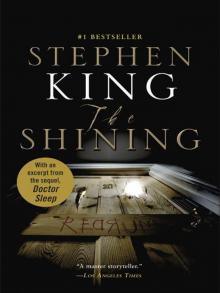 The Shining
The Shining It
It The Dead Zone
The Dead Zone The Dark Tower
The Dark Tower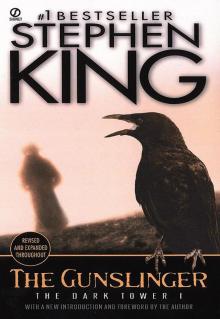 The Gunslinger
The Gunslinger Song of Susannah
Song of Susannah Under the Dome
Under the Dome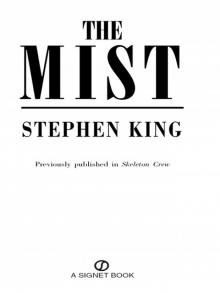 The Mist
The Mist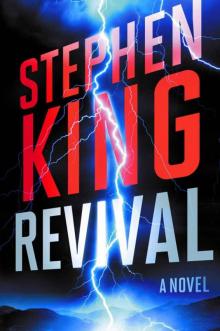 Revival
Revival Misery
Misery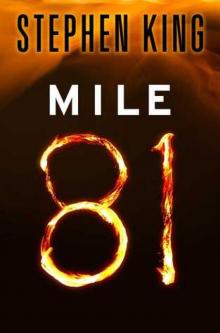 Mile 81
Mile 81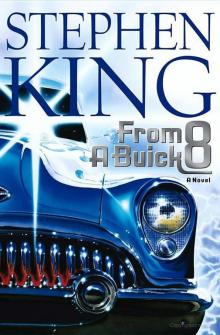 From a Buick 8
From a Buick 8 Just After Sunset
Just After Sunset Black House
Black House Doctor Sleep
Doctor Sleep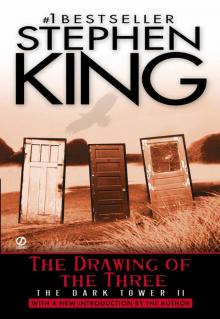 The Drawing of the Three
The Drawing of the Three Wizard and Glass
Wizard and Glass Dolores Claiborne
Dolores Claiborne Carrie
Carrie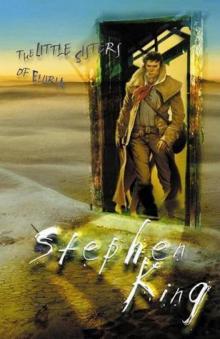 The Little Sisters of Eluria
The Little Sisters of Eluria The Waste Lands
The Waste Lands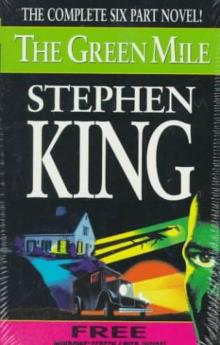 The Green Mile
The Green Mile The Girl Who Loved Tom Gordon
The Girl Who Loved Tom Gordon Cujo
Cujo The Outsider_A Novel
The Outsider_A Novel The Tommyknockers
The Tommyknockers Cell
Cell Pet Sematary
Pet Sematary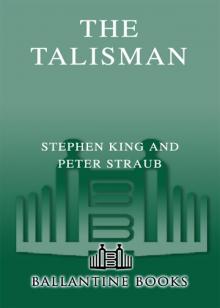 The Talisman
The Talisman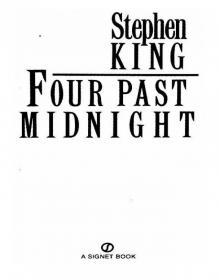 Four Past Midnight
Four Past Midnight Different Seasons
Different Seasons Needful Things
Needful Things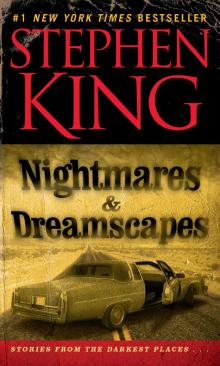 Nightmares and Dreamscapes
Nightmares and Dreamscapes Christine
Christine The Running Man
The Running Man The Eyes of the Dragon
The Eyes of the Dragon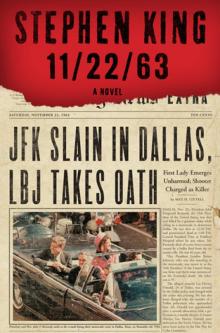 11/22/63
11/22/63 Firestarter
Firestarter Insomnia
Insomnia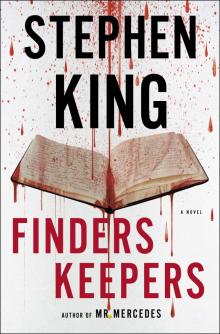 Finders Keepers
Finders Keepers Gerald's Game
Gerald's Game The Wind Through the Keyhole
The Wind Through the Keyhole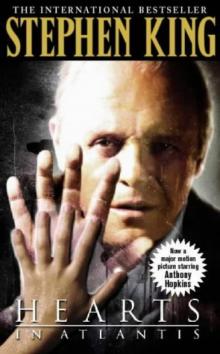 Hearts in Atlantis
Hearts in Atlantis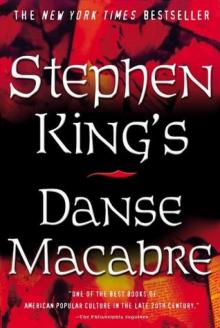 Danse Macabre
Danse Macabre Thinner
Thinner Duma Key
Duma Key The Bachman Books
The Bachman Books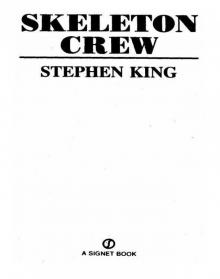 Skeleton Crew
Skeleton Crew The Outsider-Stephen King
The Outsider-Stephen King Full Dark, No Stars
Full Dark, No Stars Salem's Lot
Salem's Lot Bag of Bones
Bag of Bones Desperation
Desperation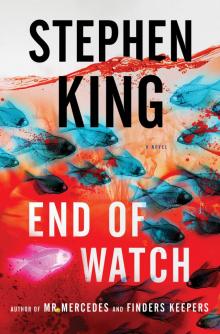 End of Watch
End of Watch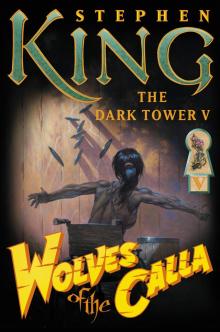 Wolves of the Calla
Wolves of the Calla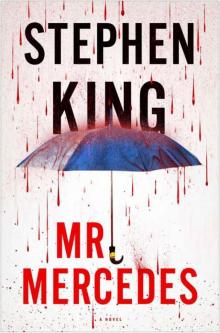 Mr. Mercedes
Mr. Mercedes Billy Summers
Billy Summers Rose Madder
Rose Madder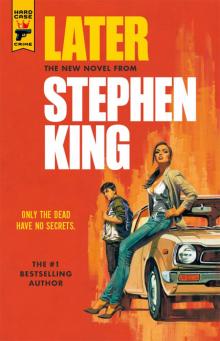 Later
Later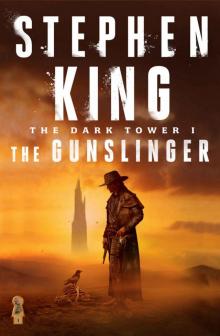 Gunslinger
Gunslinger The Langoliers
The Langoliers Joyland
Joyland If It Bleeds
If It Bleeds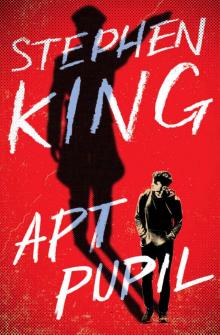 Apt Pupil (Scribner Edition)
Apt Pupil (Scribner Edition) Flight or Fright
Flight or Fright Everything's Eventual: 14 Dark Tales
Everything's Eventual: 14 Dark Tales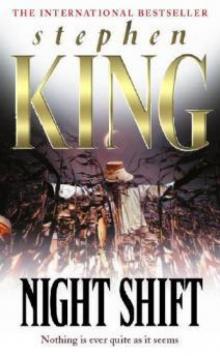 Night Shift
Night Shift The Dark Half
The Dark Half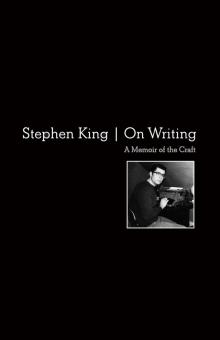 On Writing
On Writing The Institute
The Institute A Death
A Death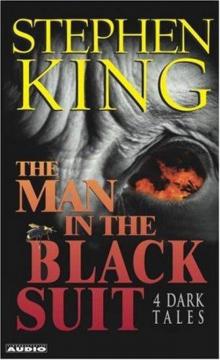 The Man in the Black Suit : 4 Dark Tales
The Man in the Black Suit : 4 Dark Tales Bullet
Bullet The Dark Tower tdt-7
The Dark Tower tdt-7 Chiral Mad 3
Chiral Mad 3 Big Driver
Big Driver Stephen King: The Green Mile
Stephen King: The Green Mile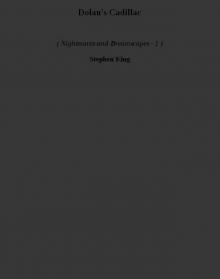 Dolan's Cadillac nad-1
Dolan's Cadillac nad-1 Head Down nad-22
Head Down nad-22 The Doctor's Case
The Doctor's Case Luckey Quarter
Luckey Quarter Rage (richard bachman)
Rage (richard bachman) Black House js-2
Black House js-2 The Wind Through the Keyhole (Dark Tower)
The Wind Through the Keyhole (Dark Tower) Duma Key: A Novel
Duma Key: A Novel Dark Tower V, The
Dark Tower V, The Cycle of the Werewolf
Cycle of the Werewolf AUTOPSY ROOM FOUR
AUTOPSY ROOM FOUR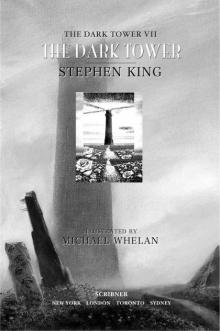 Dark Tower VII, The (v. 7)
Dark Tower VII, The (v. 7) Gramma
Gramma Suffer the Little Children
Suffer the Little Children Chinga
Chinga Word Processor of the Gods
Word Processor of the Gods Lisey’sStory
Lisey’sStory Dark Tower V (Prologue)
Dark Tower V (Prologue) The Stand (Original Edition)
The Stand (Original Edition) Rainy Season nad-13
Rainy Season nad-13 Transgressions
Transgressions The Plant
The Plant Under the Dome: A Novel
Under the Dome: A Novel The Dark Tower II: The Drawing of the Three
The Dark Tower II: The Drawing of the Three The End of the Whole Mess:
The End of the Whole Mess: Ur
Ur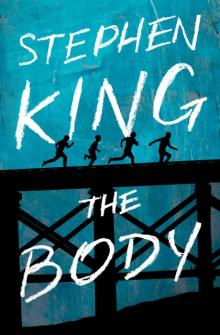 The Body
The Body Uncollected Stories 2003
Uncollected Stories 2003 Chattery Teeth
Chattery Teeth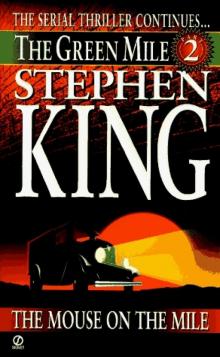 The Mouse on the Mile
The Mouse on the Mile The Cat from Hell
The Cat from Hell![The Drawing of the Three [The Dark Tower II] Read online](http://i1.bookreadfree.com/i/03/25/the_drawing_of_the_three_the_dark_tower_ii_preview.jpg) The Drawing of the Three [The Dark Tower II]
The Drawing of the Three [The Dark Tower II] Cell: A Novel
Cell: A Novel Uncle Otto's Truck
Uncle Otto's Truck Song of Susannah dt-6
Song of Susannah dt-6 The Dark Tower VII
The Dark Tower VII Head Down
Head Down Sneakers
Sneakers Crouch End
Crouch End Outsider
Outsider End of Watch: A Novel (The Bill Hodges Trilogy Book 3)
End of Watch: A Novel (The Bill Hodges Trilogy Book 3) Revival: A Novel
Revival: A Novel Everything's Eventual skssc-4
Everything's Eventual skssc-4 The Colorado Kid
The Colorado Kid Sleeping Beauties: A Novel
Sleeping Beauties: A Novel The Dark Tower IV Wizard and Glass
The Dark Tower IV Wizard and Glass A Book of Horrors
A Book of Horrors Four Past Midnight - 3 - Secret Window, Secret Garden
Four Past Midnight - 3 - Secret Window, Secret Garden The House on Maple Street
The House on Maple Street Sometimes They Come Back
Sometimes They Come Back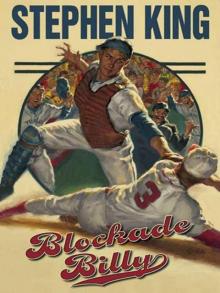 Blockade Billy
Blockade Billy Crouch End nad-17
Crouch End nad-17 Lunch at the Gotham Cafe
Lunch at the Gotham Cafe The Waste Lands dt-3
The Waste Lands dt-3 Six Stories
Six Stories A Face in the Crowd
A Face in the Crowd Case
Case Four Past Midnight - 2 - The Langoliers
Four Past Midnight - 2 - The Langoliers Umney's last case nad-21
Umney's last case nad-21 Survivor Type
Survivor Type Guns (Kindle Single)
Guns (Kindle Single) You Know They Got a Hell of a Band
You Know They Got a Hell of a Band The Jaunt
The Jaunt In A Half World Of Terror
In A Half World Of Terror Gwendy's Button Box
Gwendy's Button Box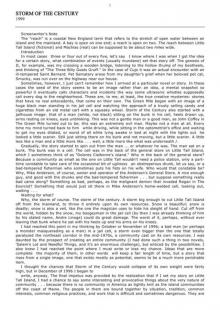 Storm of the Century
Storm of the Century The Jaunt. Travel
The Jaunt. Travel Roadwork
Roadwork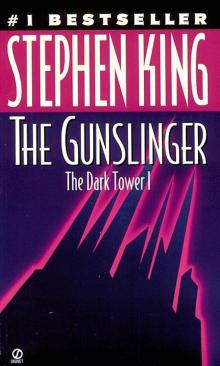 Darktower 1 - The Gunslinger
Darktower 1 - The Gunslinger Faithful
Faithful The Regulators
The Regulators A Bedroom in the Wee Hours of the Morning
A Bedroom in the Wee Hours of the Morning Graveyard Shift
Graveyard Shift The Monkey
The Monkey Children of the Corn
Children of the Corn The Reploids
The Reploids 1922
1922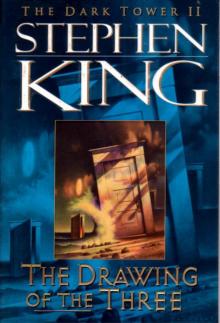 Darktower 2 - The Drawing of the Three
Darktower 2 - The Drawing of the Three Wizard and Glass dt-4
Wizard and Glass dt-4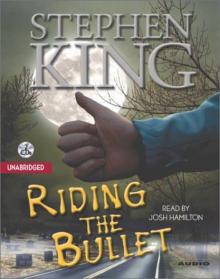 Riding The Bullet
Riding The Bullet Wolves of the Calla dt-5
Wolves of the Calla dt-5 L.T.'S Theory Of Pets
L.T.'S Theory Of Pets The Langoliers fpm-1
The Langoliers fpm-1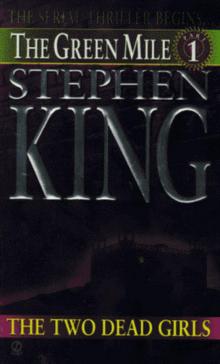 The Two Dead Girls
The Two Dead Girls The Blue Air Compressor
The Blue Air Compressor Everything's Eventual
Everything's Eventual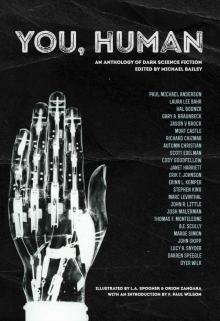 You, Human: An Anthology of Dark Science Fiction
You, Human: An Anthology of Dark Science Fiction The Night of The Tiger
The Night of The Tiger The Regulators (richard bachman)
The Regulators (richard bachman) Elevation
Elevation The Road Virus Heads North
The Road Virus Heads North Good Marriage
Good Marriage Four Past Midnight - 5 - The Library Policeman
Four Past Midnight - 5 - The Library Policeman Grey Matter
Grey Matter Herman Wouk Is Still Alive
Herman Wouk Is Still Alive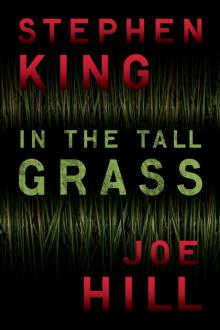 In the Tall Grass
In the Tall Grass Six Scary Stories
Six Scary Stories Foreward
Foreward The Crate
The Crate The wind through the keyhole adt-8
The wind through the keyhole adt-8 King, Stephen - Battleground
King, Stephen - Battleground The Wedding Gig
The Wedding Gig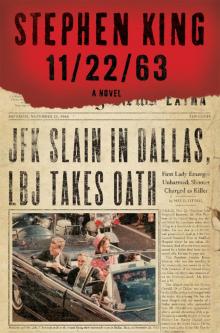 11/22/63: A Novel
11/22/63: A Novel The Long Walk
The Long Walk